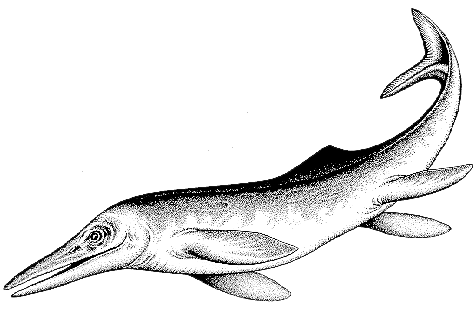








Ichthyosaur
In the rock bed on the shores of the Sikanni River lie the fossilized remains of an ichthyosaur, which scientists believe measured 23 meters from nose to tail. A marine reptile, the ichthyosaur's front limbs were developed to form paddles, which it relied on for locomotion. Unlike dolphins or whales that hunt using sonar, ichthyosaurs were able to hunt by sight because their large eyes were designed to capture the maximum amount of light possible. The ichthyosaur discovered at Pink Mountain dates back to the Triassic Period, when the super-continent Pangaea was at its largest. Ichthyosaurs were fully adapted to life in the seas, but they were able to breathe air, which forced them to periodically come to the surface. Their main diet consisted of fish, squids, and belemnites.

Process
Tools Paleontologists Use
Pink Mountain